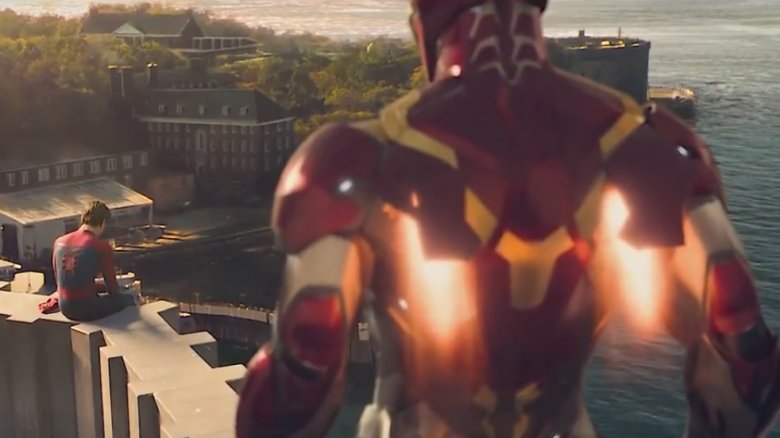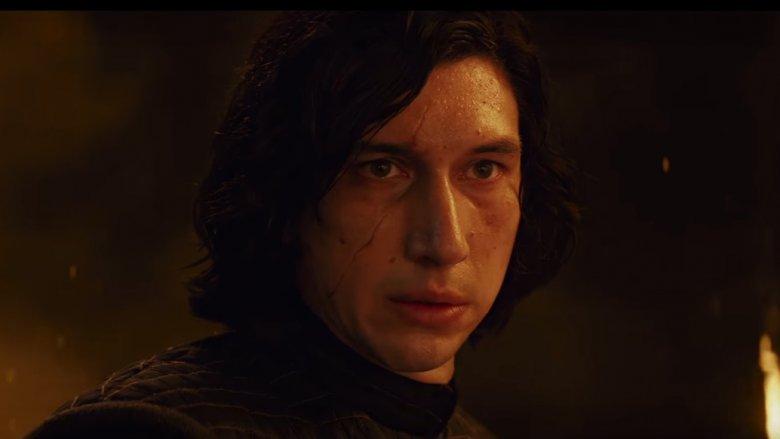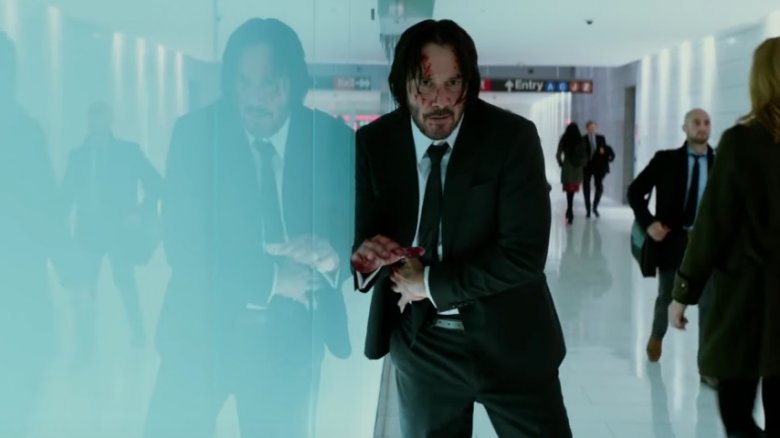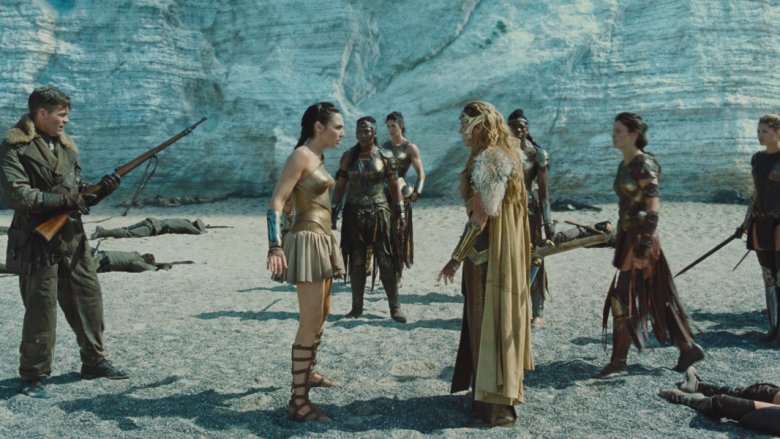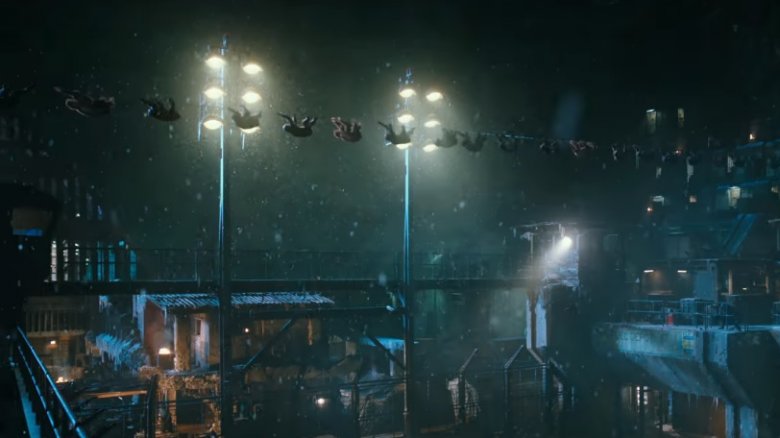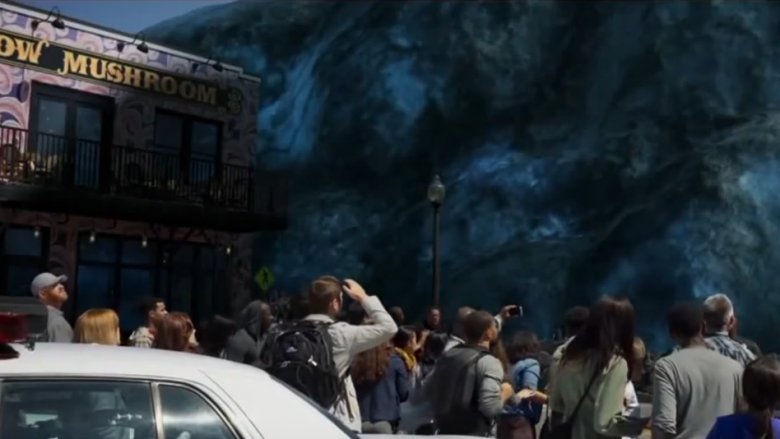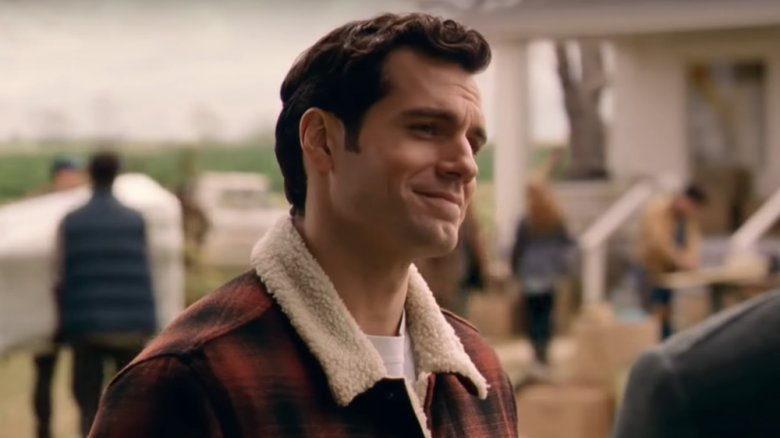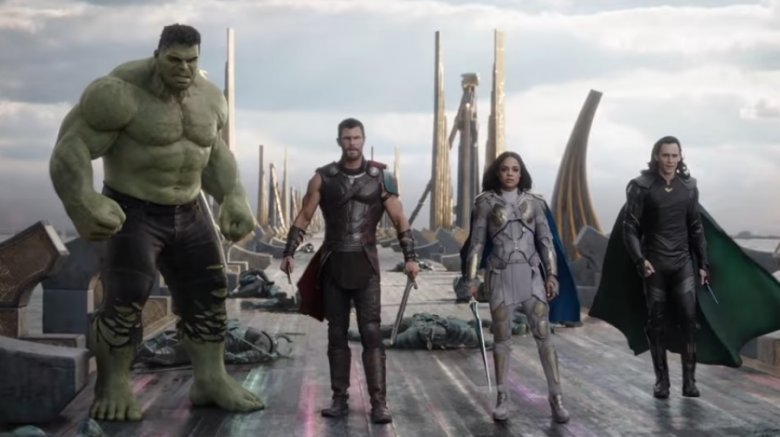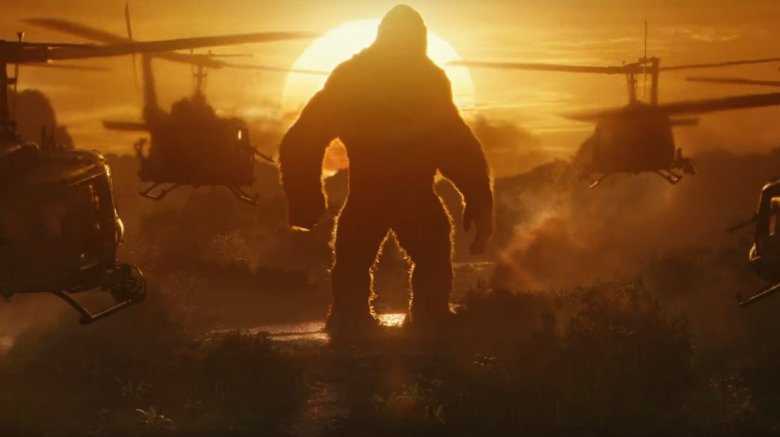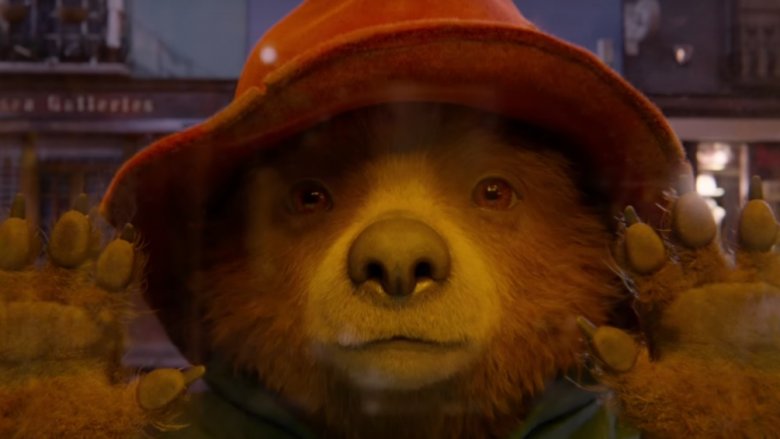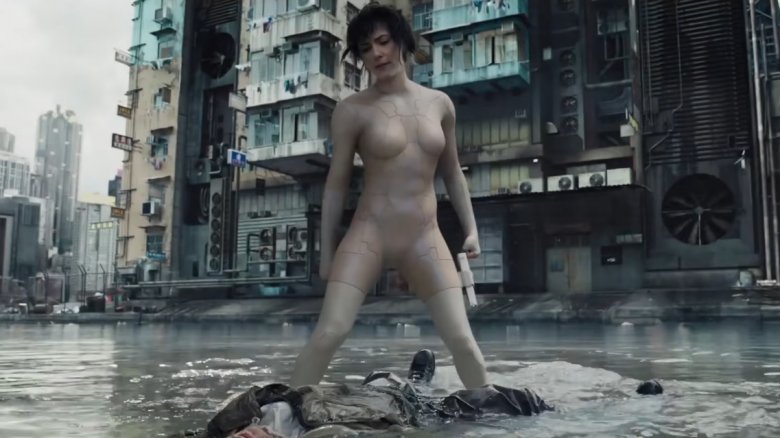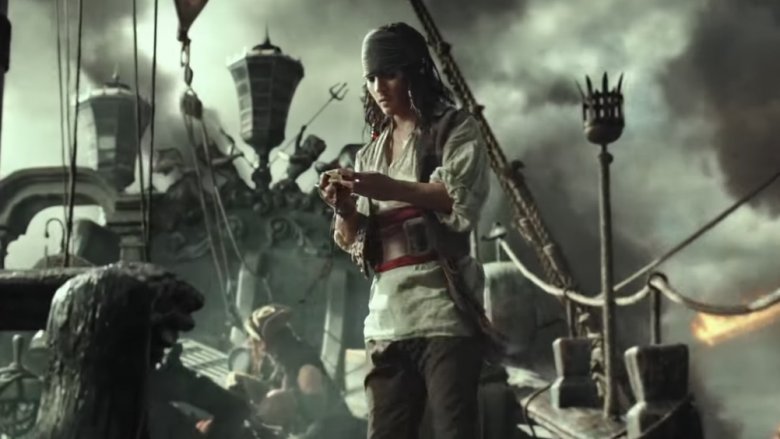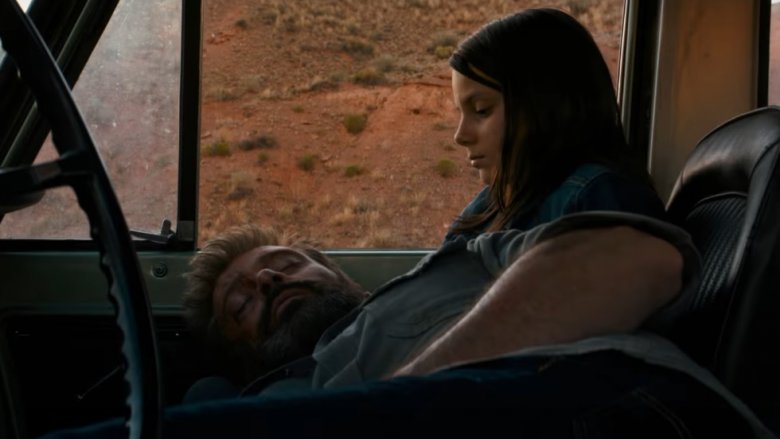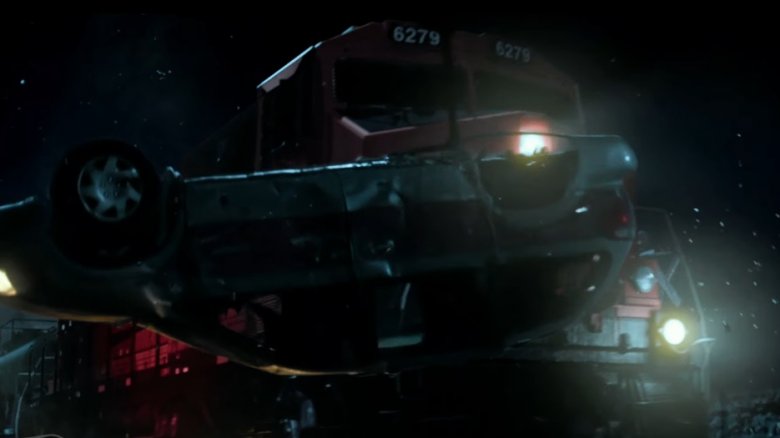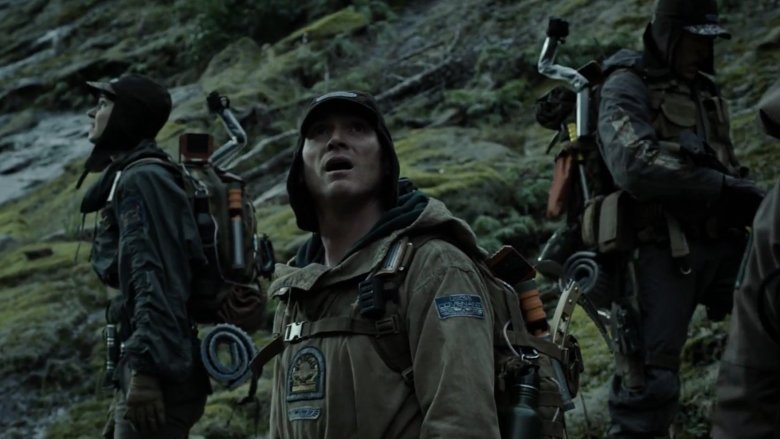Dumb Things Everyone Just Ignored In These 2017 Movies
People go to movies to be distracted and entertained. Sometimes said movies are so good at doing their job that they manage to distract audiences even with glaring plot holes or lapses in logic. Such is the case with the movies on this list.
Not many people kicked up a fuss over, or even noticed, some of the dumbest moments in these 2017 movies, so we're here to shed light on them. Get ready to tear apart some of 2017's best flicks.
Spider-Man: Homecoming's scolding of Peter Parker
Were the movie written logically, Spider-Man: Homecoming's ferry scene would never have happened, and Peter wouldn't have gotten his suit taken away. In reality, both of those unfortunate events only occurred because genius tech inventor Tony Stark wasn't smart enough to send a quick reply to his protégé.
To elaborate, let's go back to the awkward argument between Iron Man and Spidey. Peter says "None of this would've happened if you'd just listened to me," to which Tony responds "I did listen, kid. Who do you think called the FBI?" Well, jeez, Tony, wouldn't that have been a nice thing to have mentioned to Peter beforehand? Honestly, young Peter Parker wasn't acting insubordinate and churlish when he boarded that ferry. He was simply doing his heroic duty because he thought no one else was going to. After all, with great power comes great responsibility (not that the movie ever mentions this).
All of the movie's troubles following the ferry scene, from Peter being stuck with his janky old suit to having to fight the Vulture solo, are a direct result of Tony's inability to respond to messages in a timely manner. A simple "Yeah, kid, I got your message, and the FBI are en route, so sit this one out" would've saved everyone a lot of headaches. Unfortunately, the world's most notoriously irresponsible billionaire playboy philanthropist just couldn't be arsed to do such a simple task.
Luke's trap in Star Wars: The Last Jedi
Let's face it: there's no way Kylo should've missed the fact that he was fighting a projection of Luke and not the real thing. Seriously, the clues were too obvious: Luke didn't leave footsteps and was using a lightsaber that got destroyed minutes earlier. Heck, if none of that tipped Kylo off, the fact that Luke had suddenly cleaned up his scraggly-old-man beard and dyed his hair back to brown should've set off alarm bells. After all, Luke isn't exactly the vain type.
One could argue that Kylo was emotionally distraught and therefore unable to process the absolutely absurd amount of clues that were being shoved in his face, but, even then, letting emotions get the better of him? That's a pretty glaring rookie mistake for a guy tasked with leading the universe's deadliest space-Nazi army.
Assassin incentives in John Wick: Chapter 2
Toward the final third of John Wick: Chapter 2, John breaks some rules and scores a seven-million-dollar bounty on his head. Thanks to this bounty, all of the assassins in New York City (of which there happen to be a preposterous amount) rear their heads and try to take a stab at killing Wick. He kills them all.
What doesn't make sense here is that in the previous movie, there was a two-million-dollar bounty on Wick's head and not one random assassin perked up at the offer. Similarly, when the offer got doubled to four-million, only one ultra-desperate assassin tried to take on Wick (and lost). This lack of challenge stems from the fact that Wick's got a reputation for being the Baba Yaga, otherwise known as any foe's worst nightmare.
Therefore, Chapter 2's dumb moment comes from the fact that no assassin was willing to challenge Wick for two million, only one was willing to try for four, yet everyone and their grandmother gave it a shot for seven million. A three-to-five-million dollar bounty increase is not enough of a payday bump to warrant suicide by fighting the man who single-handedly dismantled the Russian mob in the last movie. It just doesn't add up.
Wonder Woman's not-so-secret Themyscira
As great as Wonder Woman was, it was chock-full of dumb moments. How was Steve Trevor able to infiltrate the German army without a shred of identification or the ability to speak German with a proper accent? How was Wonder Woman able to avoid getting shot in no man's land when her shield only covered her midriff? Moments like these were overlooked in favor of the movie's many strong points, but it doesn't change the fact that the plot was sloppy. The clearest example of this is when Themyscira is discovered by Steve Trevor, the first man to stumble upon it — even though it's clearly within arm's reach of England and uses an invisibility shield that's penetrable by literally anyone.
Think about it: Diana and Steve use a sailboat to reach London from Themyscira, so the Amazons' secret island has got to be within sailing distance of the former. And considering Steve could randomly fly through said island's cloaking shield, as could the boat following him, it's ludicrous to suggest that no one had stumbled upon Themyscira beforehand. Seriously, back in the early 1900s Great Britain was known almost exclusively for their unrivaled navy, yet they couldn't find a weakly shielded island floating but a few hundred (at most) miles away from home base? That seems like a glaring oversight on the part of Wonder Woman's writers.
The great ape escape in War for the Planet of the Apes
For such a great movie, War for the Planet of the Apes sure stumbles harshly when detailing how the apes managed to outmaneuver man at the film's climax: From within the confines of a maximum security penitentiary that has guards patrolling 24/7, a hundred or so apes are able to sneak away via a convenient hole in the dirt floor of their cell. Not one guard notices the rapid depopulation of said cell. And, as if that weren't preposterous enough, the movie then sends all the young chimps (who were held in a separate area) monkey-barring across electrical wires, right above guards' heads. Not one guard's peripheral vision detects the massive silhouettes created by this simian conga line?
Even though all of this happens at night, an entire internment camp's worth of chimps aren't just going to slink away within a few hours and manage said feat completely unnoticed. Even with talking apes, it became hard to suspend disbelief here.
Guardians of the Galaxy Vol. 2's canonically ignored alien blob
Toward the end of Guardians of the Galaxy Vol. 2, Ego unleashes an alien tumor that starts gobbling up Earth from the inside. This tumor grows to massive proportions, wreaking havoc on an entire town before it's stopped. Given that this event is estimated to have occurred somewhere between 2014 and 2015 in the MCU's chronology, it's baffling that there's not a single mention of it across the bevy of other MCU movies that take place within that time frame.
Seriously, does anyone actually think the Avengers or S.H.I.E.L.D. didn't spot a massive, town-destroying alien blob on Earth? No way. The dozens of alien-obsessed parties within the MCU would've been on the scene within minutes. Therefore, the fact that no one besides the Guardians seem to acknowledge the whole alien-tumor kerfuffle is positively bonkers. Yet that's how it is; the MCU expects us to believe that Nick Fury will get all worked up about a mysterious hammer in New Mexico but can't be bothered by blue alien Jell-O that's consuming entire chunks of Earth. Yeah, not buying it.
The resurrection of Clark Kent in Justice League
Just like Wonder Woman, Justice League is riddled with dumb moments, the likes of which were overlooked in favor of discussing CGI mustaches and directorial drama. However, just because virtually no one talked about these flawed moments, doesn't mean they weren't there.
At the very end of Justice League, we see Superman has revived his Clark Kent alter-ego now that he's back from the dead. While returning from the grave might not be a big deal for Kal-El, the human side of the equation begs to differ: How can Kent just magically come back to life after his (very public) funeral? He worked for the Daily Planet, for crying out loud. We're expected to believe none of his coworkers (many of whom are investigative journalists) either heard about his death or aren't disturbed by the fact that he's magically alive again (and during the exact same window of time that Superman chose to resurface yet)?
While we have to assume the revival of Clark Kent happened solely so that Supes could do the classic "tear off the shirt to reveal the Superman logo" gimmick at the end of the film, that cute little Easter egg completely obliterates the last thread of logic Justice League was clinging to.
Lady Sif (not) in Thor: Ragnarok
For all the fun the Marvel Cinematic Universe provides, it's hard to argue that it cares much about making sense. As if the latest Spider-Man movie and Guardians of the Galaxy Vol. 2 weren't problematic enough in the "dumb moments" department, Thor: Ragnarok managed to be Marvel's third strike in 2017 alone. The issue? Lady Sif.
Basically, Sif seems to just not exist anymore. After having a serious role in the first Thor movie and a decent auxiliary presence in Thor: The Dark World, Lady Sif is nowhere to be found during the destruction of Asgard. Seriously, she didn't even get a tacked-on death scene or line of dialogue that addresses her absence. She's just ... not there. Even the Warriors Three got an ending to their arcs, as anticlimactic as it was. The fact that Sif got snubbed just seems like a massive oversight on the parts of Taika Waititi and the Marvel crew, and the half-assed "explanation" by Kevin Feige doesn't really fix this matter.
Kong: Skull Island's silly humans
While this dumb thing didn't have much impact on Skull Island's plot as a whole (as virtually none of the dumb moments in this movie did), it still stands as a great piece of evidence when trying to determine how much thought went into the execution of this film's plot.
Here's the scoop: A team of researchers and a few military personnel are tasked with infiltrating Skull Island, which is surrounded by a permanent storm (that, in and of itself, is scientifically impossible and illogical). To pass through this natural hazard, they bring a massive destroyer ship ... and then abandon it in favor of a few open-doored helicopters. Yes, they fly through a deadly thunderstorm in a couple of tin cans instead of using their massive, ultra-armored boat. Sure, there might've been some sharp rocks near the shore, but a slightly torn-up warship is still leaps and bounds safer than some dainty, door-less helicopters going up against hurricane winds.
Paddington 2's sometimes-magical villain
Even though it's one of the best animated movies of all time, Paddington 2 isn't without its flaws, minute as they are. Case in point: The movie's villain. Near the beginning of the movie, the film's thieving antagonist uses a smoke bomb to magically disappear after being chased by Paddington into a dead end. After this scene, however, the villain never uses any sort of pseudo-magic again and, from that point on, all of his tricks are purely practical (i.e., elaborate costume changes, a bit of parkour, etc.). What makes this smoke bomb escape even more peculiar is the fact that it's never explained later on in the movie, almost like it was a cute little gag the writers intentionally left in, unconcerned that it undermined the entire plot.
Troublesome as this strange narrative beat is, we can't pretend it's enough to take down Paddington 2 by itself. The film's still an awesome animated movie for the whole family. Go see it. One dumb moment can't ruin the absolute oodles of innocent fun Paddington 2 has to offer.
Ghost in the Shell's minimum max-security
At the film's outset, super-soldier cyborg Major Motoko Kusanagi is created to do the bidding of the sinister Hanka Robotics corporation. When she stops following orders, Hanka Robotics demands she be shut down and replaced. To accomplish this, the company's goons trap Major Kusanagi in a Hanka deactivation facility. Said facility is insinuated to be a maximum security fortress, hence why the company feels confident they can terminate their most volatile and dangerous employees/products (like Major) there.
Well, as it turns out, the facility isn't very secure at all. All it takes for Major to bust out of there is a light scuffle with a few guards and then some lazily written off-screen action, which culminates in her driving off into the figurative sunset atop a stolen motorcycle. It's nonsense.
First of all, Major could barely handle a few guys with tasers earlier in the movie, yet at this point she's somehow equipped to take on an entire max-security stronghold by herself? Had the movie played by its own rules, she would've been killed before she escaped from her deactivation bed. And the building itself would have been thick with defense capabilities. This whole set piece, and the sequence within it, seems rather poorly thought out.
Pirates of the Caribbean: Dead Men Tell No Tales' problematic compass
In Pirates of the Caribbean 5: Dead Men Tell No Tales, Jack Sparrow's magical compass causes a few major continuity issues — which no one seemed to care about.
For example, during a flashback, Pirates 5 shows a young Sparrow acquiring the compass from his at-the-time captain, moments before the latter's death. However, Pirates 1 claims Sparrow originally got the compass from Tia Dalma. And that's just the first issue.
There are also plot problems with the magical properties of said compass. The vengeful spirit Captain Salazar (the movie's villain) wants the compass because it can point him to his greatest desire as well as unleash the previous owner's greatest fear, a curse that comes as the result of the previous owner betraying the compass by losing it. It's two birds with one stone for Captain Salazar, then! Only problem: Jack's lost the compass a gazillion times before and up until this movie, it's never unleashed squat on the boozy pirate. Maybe this time is cumulative? Who knows. The writers sure don't.
Everything about Eden in Logan
The latter half of Logan is all about Logan's journey to Eden, a safe haven right along the border of the United States and Canada. Logan's acting as an escort to Laura, a young girl who needs to cross the border in order to escape the Reavers, a nefarious group hellbent on killing young mutants such as herself. However, Logan never explains why Canada is the answer. Why can't the Reavers just follow Laura across the border? What's stopping them? Are they allergic to maple syrup? That'd be more of an explanation than the movie provides.
Everything to do with Eden is flawed, from a writing standpoint. First of all, the "super-safe," "super-secret" Eden's coordinates are shared via an X-Men comic (so meta). The Reavers are privy to all kinds of government and mutant secrets, yet they can't crack a code ripped directly from a comic book that's being haphazardly circulated by a bunch of children (such as Laura) and their caretakers (such as Logan and Laura's previous guardian) via notes, speech and long-distance communications? The hyper-dangerous Reavers can't intercept those coordinates? And, back on the topic of Canada, even though some fans theorize Canada's safer than the U.S. in Logan's universe because it directly protects mutant citizens, even if that theory were true, what's some sparse government protection going to do against the Reavers? They have a small army, for crying out loud.
Simply put, Logan's Eden endgame isn't terribly well thought out.
Power Rangers' pain train
Toward the beginning of Power Rangers, the movie's five would-be Rangers find magic stones at a mine and decide to steal them. This prompts a car chase sequence where they're pursued by the mine's security guards. Keep in mind, this escape takes place before the five kids have gotten their super strength, ability to morph, or any other such form of protection, meaning that when the quintet's van gets smashed by an oncoming freight train, it looks lethal. Again, this happens before they discover their powers, before they can utilize their Ranger armor, before any logical explanation arises for how they might survive getting rammed by a 6,000-ton locomotive. The scene concludes with a lingering shot of the totaled car trapped between tree trunks. This shot includes no sign of movement or life within the car, further insinuating that the kids are dead.
This is why it's so confusing when the very next shots feature each of the five kids waking up, completely unharmed, back in their beds at home. The movie doesn't explain this transition at all. It explicitly shows the kids being smashed around inside the van post-train impact, then shows some more destruction footage, then cuts to the teenagers' school morning wake-up routine. While some fans theorize the kids were teleported out of the van midway through the ordeal, this theory is based off of Power Rangers lore that crops up nowhere in the movie. So, as far as the movie's universe's own rules go, there's no explaining this one.
The suicide squad of Alien: Covenant
In continuing every sci-fi horror movie's trend of sending the least qualified people out for extremely dangerous jobs, Alien: Covenant stars a team of colonists who aren't wise enough to wear helmets while traipsing around on an uncharted planet. Again, these are colonists, individuals whose job it is to explore new regions and set up safe settlements for their people. These same folks, who clearly know a thing or two about exploring the unknown, don't have the wits about them to put on helmets before exploring a mysterious planet that showed multiple signs of being sketchy before they'd even landed on it.
As you might've guessed, this lack of helmets results in all kinds of bad stuff going down. Facehuggers launch out of alien eggs to give those bare-faced colonists a smooch, airborne toxins fly around and slip into people's ears, you name it. These sorts of events are what end up dooming everyone in Covenant, and it all could've been avoided if they'd put something on their darn heads before going on their adventure.
